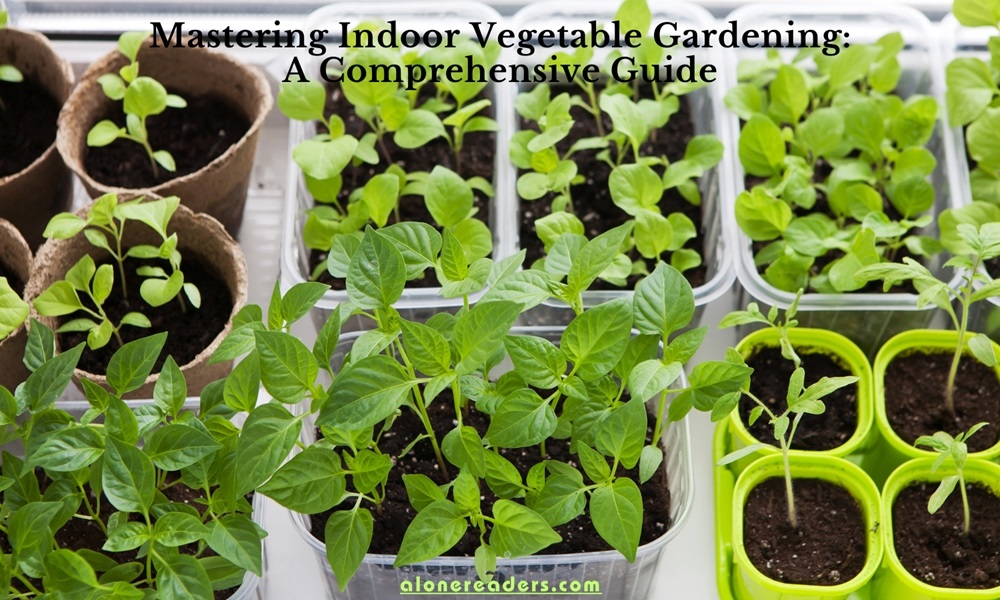
Welcome to the world of indoor vegetable gardening, where the joys of cultivating your own fresh produce meet the convenience of your living space. This comprehensive guide is designed to usher you into the rewarding practice of growing vegetables within the comfort of your home. Whether you're a seasoned gardener looking to bring your passion indoors or a beginner curious about starting your own small-scale garden, this article provides all the information you need. From understanding the minimal space requirements to selecting the best vegetables that thrive indoors, we cover every aspect of indoor gardening. Discover how to create an environment that ensures the healthy growth of your plants, and learn practical tips for maintaining a flourishing garden throughout the year. Prepare to embark on a journey that not only enhances your home's ambiance but also contributes to a sustainable lifestyle by providing fresh, organic produce at your fingertips.
A small amount of space is required for an indoor garden. If you would want to start small, I recommend starting your garden on a 2 × 1 ½ windowsill. Trays and gardening racks are available for purchase in home and gardening shops, or you may order them online if you want a more substantial garden.
The ideal temperature range is 70–72 °F. However, it's a good idea to assume that plants will feel comfortable in anything that people find pleasant. Leafy greens are an exception. Since they can withstand lower temperatures, consider planting leafy greens in a room in your house or apartment that becomes cooler throughout the fall, winter, or spring.
Below are the easiest vegetables to grow in your home:
Fresh and tasty product is guaranteed when growing vegetables indoors. Below are some tips for growing a healthy indoor vegetable garden:
Pick the Correct Plant
Not all vegetables are good to cultivate indoors. Look for plants with compact growth patterns, taking your time. The ideal plants produce peppers or cherry tomatoes. All leafy greens grow well indoors, including kale, spinach, and lettuce. Indoor herb gardening is usually simple and low maintenance.
Begin Slightly
A vegetable garden should not be grown entirely inside. Beginning with a few simple vegetables that you enjoy eating is preferable so that you may build on them. Plant additional plants in your indoor garden as you gain more expertise.
Have patience
Vegetables require patience and time to grow inside. Don't count on success right now. Try a variety of plants, lighting arrangements, and watering schedules until you determine what suits your area and way of life the best. If you are patient and persistent, you will be rewarded with a flourishing indoor vegetable garden.
Select a Location
Selecting the primary space for your plants to develop is the first step in starting a vegetable garden inside. Vegetables have preferences just as humans do; just make sure the temperature stays around 70˚F for best development. Make sure your plants get enough light or exposure to the sun during the day so they may continue to thrive.
Your indoor vegetable garden could be best planted in a cool, windowed space like a spare room or basement. Plant development requires proper light, but you may want to use extra lighting equipment. Your herbs, roots, and leafy greens will flourish and show healthy leaves or produce tasty vegetables if given the right care.
Set up the Grow Light Equipment
It's time to install some classic lighting to bring your vegetable indoor garden to life. For them to grow well, your plants will require at least some light. The many kinds of lights available to you are as follows:
Structure of the Plants
Now is the time to prepare:
The Soil and Fertilizer
Your plants may obtain all the nutrients they require by using high-quality soil. Check for weeds, bugs, and fungi before choosing your soil.
Consider purchasing organic potting soils if you live in a tiny place. Proceed cautiously with this fertilizer application. Burning roots result from over fertilizer.
Being able to produce vegetables inside offers several advantages, including the following:
In conclusion, indoor vegetable gardening presents a delightful and efficient way to bring a slice of nature into your home. It's a sustainable practice that offers numerous benefits, from the joy of harvesting your own organic produce to the convenience and savings it brings. As we've explored, the success of an indoor garden lies in understanding the right conditions and choosing suitable vegetables that can adapt to an indoor environment. With the guidelines and tips provided in this guide, you're now equipped to start your own indoor vegetable garden, regardless of the size of your living space. Remember, patience and persistence are key to nurturing a thriving garden. As you watch your plants grow and enjoy the fruits of your labor, you'll find that indoor vegetable gardening is not just a hobby, but a fulfilling lifestyle choice that enhances your wellbeing and connects you with nature, right inside your home.